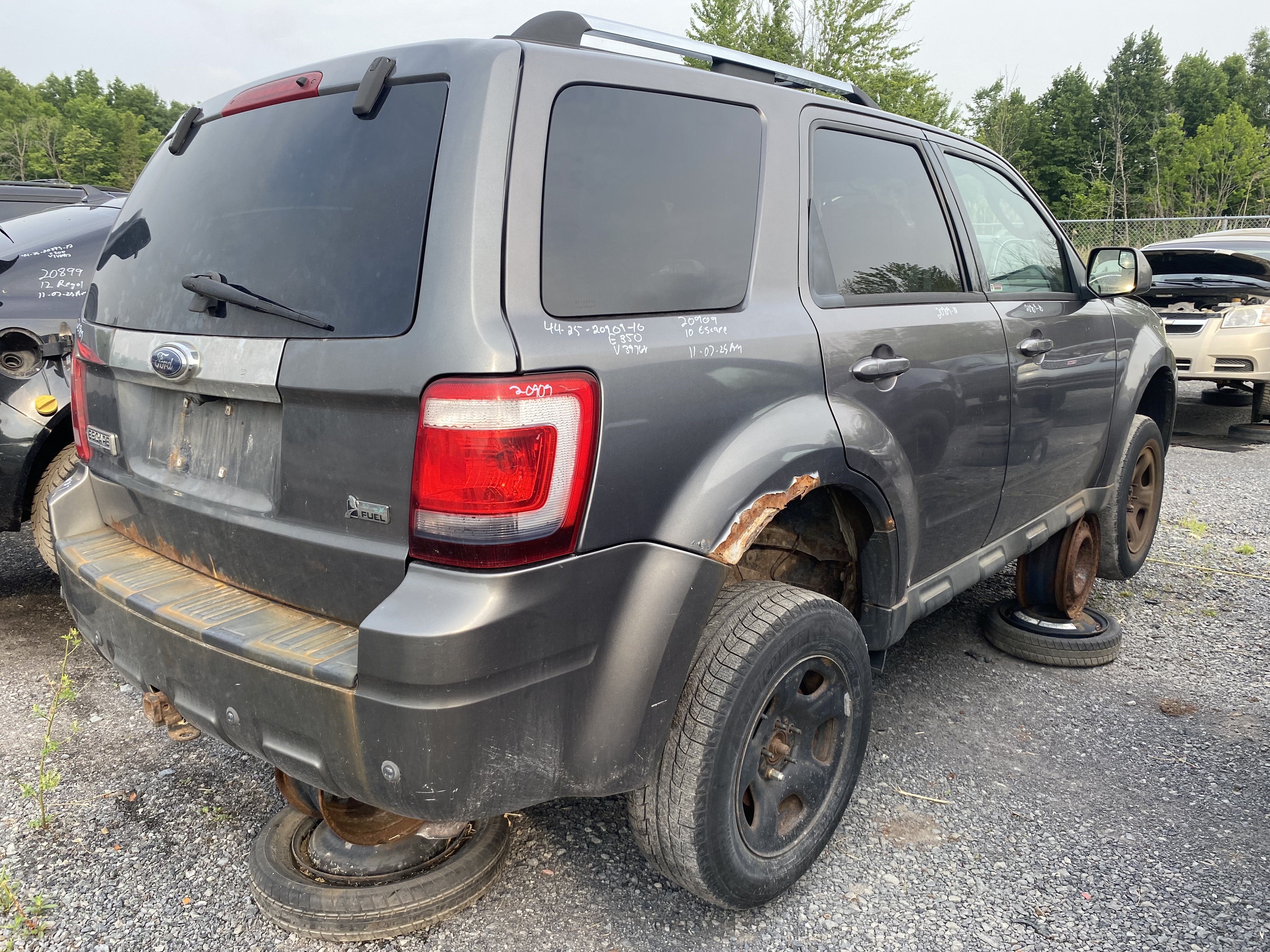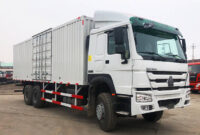2010 Diesel Trucks For Sale: A Comprehensive Guide to Finding Your Next Workhorse pickup.truckstrend.com
The year 2010 holds a unique and often coveted position in the landscape of heavy-duty diesel trucks. For many enthusiasts, contractors, and avid towers, a 2010 diesel truck represents a sweet spot – a blend of modern power and capability without some of the more complex and costly emissions systems found in later models. If you’re in the market for a robust, reliable, and often more affordable powerhouse, understanding what makes the 2010 model year special is crucial. This comprehensive guide will navigate the ins and outs of 2010 diesel trucks for sale, helping you make an informed decision.
Why Consider a 2010 Diesel Truck? The Pre-DEF Advantage
2010 Diesel Trucks For Sale: A Comprehensive Guide to Finding Your Next Workhorse
The primary reason 2010 diesel trucks remain highly sought after is their unique position regarding emissions regulations. While they were equipped with Diesel Particulate Filters (DPF) and Exhaust Gas Recirculation (EGR) systems to meet stricter EPA standards, they predate the widespread adoption of Diesel Exhaust Fluid (DEF) systems, which became mandatory for most heavy-duty trucks starting in 2011.
This "pre-DEF" status translates into several benefits:
- Simpler Emissions Systems: Less complexity means fewer potential components to fail and generally lower maintenance costs associated with emissions.
- Reduced Operating Costs: You won’t have the ongoing expense of purchasing DEF, which, while not exorbitant, adds up over time.
- Proven Reliability: By 2010, the "Big Three" manufacturers had several years to refine their DPF/EGR systems, making these models generally more reliable than their initial iterations from the mid-2000s.
- Strong Performance: These trucks offer impressive towing and hauling capabilities, often with horsepower and torque figures comparable to newer, more complex models.
- Value for Money: You can often find a well-maintained 2010 diesel truck at a significantly lower price point than a comparable 2011+ model, offering excellent bang for your buck.
- Aftermarket Support: A robust aftermarket exists for these trucks, offering parts, upgrades, and diagnostic tools.

Key Players: The Big Three in 2010 Diesel Trucks
In 2010, the heavy-duty diesel truck market was dominated by three major players, each offering a compelling package. Understanding the specifics of each can help narrow down your search.
1. Ford F-Series Super Duty (6.4L Power Stroke)

The 2010 Ford Super Duty was powered by the 6.4-liter Power Stroke diesel engine. This engine was a beast, known for its impressive power output (350 hp and 650 lb-ft of torque) and quiet operation. It was paired with the TorqShift 5R110W automatic transmission, a very capable unit.
- Strengths: Exceptional towing capability, comfortable and spacious interiors, strong aftermarket support.
- Considerations: While powerful, the 6.4L Power Stroke is often cited as the most problematic of the 2010 diesel engines due to issues with its DPF system, turbochargers, and fuel system. Regenerations were frequent, leading to potential oil dilution and premature wear if not properly maintained. Early signs of issues include excessive white smoke, reduced power, or frequent check engine lights. A thorough inspection of the emissions system and turbochargers is paramount.

2. Ram Heavy Duty (6.7L Cummins)
The 2010 Ram Heavy Duty models (2500 and 3500) featured the legendary 6.7-liter Cummins inline-six engine. This engine is renowned for its durability, simplicity, and impressive longevity. In 2010, it produced 350 hp and 650 lb-ft of torque, often paired with the Aisin AS68RC (3500 models) or the 68RFE automatic transmission. The 2500 models also gained a coil-spring rear suspension, offering a much-improved ride quality.
- Strengths: Unparalleled engine longevity, strong resale value, robust drivetrain, excellent for heavy hauling, and generally considered the most reliable engine option for the year.
- Considerations: While the engine itself is a workhorse, the emissions equipment (EGR and DPF) on these models can still be a source of issues if not maintained. Common issues include clogged EGR coolers and DPFs. Some owners report minor electrical gremlins or transmission issues with high mileage, but these are often less severe than engine-related problems on other brands.
3. Chevrolet Silverado/GMC Sierra HD (6.6L Duramax LMM)
General Motors’ 2010 heavy-duty trucks were equipped with the 6.6-liter Duramax LMM diesel engine, producing 365 hp and 660 lb-ft of torque. This engine was mated to the excellent Allison 1000 six-speed automatic transmission, a highly regarded combination known for its smooth shifts and robust performance.
- Strengths: Smooth and refined power delivery, comfortable ride, excellent interior ergonomics, highly reliable Allison transmission, strong performance.
- Considerations: The LMM Duramax is generally a robust engine, but common issues include injector problems (though less prevalent than earlier Duramax generations), fuel rail pressure regulator issues, and DPF-related problems if not properly maintained. Some owners report issues with glow plugs or certain electrical components.
What to Look For When Buying a 2010 Diesel Truck: Practical Advice
Purchasing a used diesel truck, especially one from 2010, requires careful consideration. A thorough inspection can save you significant headaches and money down the road.
- Pre-Purchase Inspection (PPI): This is non-negotiable. Have a qualified diesel mechanic (ideally one specializing in the specific make you’re considering) perform a comprehensive inspection. They can identify potential issues that an untrained eye might miss.
- Service Records: Demand to see detailed service records. Consistent maintenance, especially oil changes, fuel filter replacements, and transmission services, is critical for diesel longevity. Look for evidence of DPF/EGR system maintenance or cleaning.
- Mileage vs. Condition: High mileage on a diesel truck isn’t necessarily a deal-breaker if it’s been well-maintained. Diesel engines are designed to last hundreds of thousands of miles. A low-mileage truck that’s been neglected can be a worse buy than a high-mileage, meticulously cared-for one.
- Rust Inspection: Check the frame, brake lines, fuel lines, suspension components, cab corners, rocker panels, and wheel wells for rust, especially if the truck is from a rust-belt region.
- Engine Bay Check: Look for fluid leaks (oil, coolant, fuel, transmission fluid). Check the condition of belts and hoses. Listen for unusual noises (knocks, squeals, hisses). Pay attention to the turbocharger for excessive shaft play or oil leaks.
- Transmission Check: During the test drive, ensure smooth, consistent shifts without harshness or slipping. Check the transmission fluid level and color – it should be red/pink, not dark brown or burnt-smelling.
- Emissions System Integrity: Look for signs of "deletion" (removal of DPF/EGR systems). While some owners do this for performance or simplicity, it is illegal in most areas and will make the truck unable to pass emissions inspections. Ensure the DPF is present and appears intact. Ask if the DPF has ever been cleaned or replaced.
- Test Drive: Pay attention to how the truck drives. Does it track straight? Are the brakes strong and even? Is there any excessive smoke from the exhaust (a little black smoke under heavy acceleration is normal for a diesel, but constant white or blue smoke is a red flag)? Test all accessories, including AC, heat, power windows, and lights.
- Fluid Analysis: Consider sending samples of engine oil, transmission fluid, and coolant for laboratory analysis. This can reveal hidden issues like coolant in the oil (head gasket), fuel in the oil (injector issues), or excessive wear metals.
Maintenance and Ownership Considerations
Owning a 2010 diesel truck comes with specific maintenance requirements and potential costs.
- Fuel Quality: Always use high-quality diesel fuel and consider using a reputable fuel additive to help lubricate the fuel system and prevent gelling in cold weather.
- Fluid Changes: Diesels require more frequent and specific fluid changes than gasoline engines. This includes engine oil (often larger capacities and specific diesel-rated oils), transmission fluid, differential fluids, and coolant. Follow the manufacturer’s severe service schedule if you tow or haul frequently.
- Filter Replacements: Regular replacement of fuel filters (often two), oil filters, and air filters is crucial. Clogged fuel filters can starve the injection pump, leading to costly repairs.
- Emissions System Maintenance: Even without DEF, the DPF and EGR systems require attention. DPFs can become clogged over time, requiring forced regenerations, professional cleaning, or eventually replacement. EGR valves and coolers can also clog with soot, requiring cleaning.
- Cost of Parts & Labor: Diesel parts are generally more expensive than gasoline engine parts, and labor rates for diesel mechanics can be higher due to specialized tools and expertise. Budget for higher maintenance costs than a typical gasoline truck.
- Aftermarket Modifications: Be wary of trucks with extensive performance modifications unless you fully understand their implications for reliability and legality. Poorly installed or tuned modifications can lead to premature engine wear.
- Insurance Costs: Heavy-duty trucks, especially diesels, can have higher insurance premiums due to their replacement cost and potential for higher repair costs.
2010 Diesel Trucks For Sale: Estimated Price Guide
Prices for 2010 diesel trucks can vary widely based on mileage, condition, trim level, and regional demand. The table below provides a general range, but a pre-purchase inspection is always recommended.
| Make/Model | Engine | Condition: Fair (High Mileage/Minor Issues) | Condition: Good (Average Mileage/Well-Maintained) | Condition: Excellent (Low Mileage/Pristine) |
|---|---|---|---|---|
| Ford F-250/F-350 Super Duty | 6.4L Power Stroke | $12,000 – $18,000 | $18,000 – $25,000 | $25,000 – $35,000+ |
| Ram 2500/3500 Heavy Duty | 6.7L Cummins | $15,000 – $22,000 | $22,000 – $30,000 | $30,000 – $40,000+ |
| Chevy Silverado/GMC Sierra HD | 6.6L Duramax LMM | $14,000 – $20,000 | $20,000 – $28,000 | $28,000 – $38,000+ |
Note: These are estimates as of late 2023/early 2024 and can fluctuate based on market conditions, specific trim levels (e.g., Lariat, Laramie, Denali will be higher), and modifications.
Frequently Asked Questions (FAQ)
Q: Are 2010 diesel trucks reliable?
A: Generally, yes, but it depends heavily on the specific make/model and, most importantly, its maintenance history. The Ram with the Cummins engine is often cited as the most reliable, followed closely by the Duramax. The 6.4L Power Stroke in the Ford requires more diligent maintenance and awareness of its common issues.
Q: Do 2010 diesel trucks require DEF (Diesel Exhaust Fluid)?
A: No, 2010 models do not require DEF. They use a Diesel Particulate Filter (DPF) and Exhaust Gas Recirculation (EGR) system for emissions control, but the Selective Catalytic Reduction (SCR) system that uses DEF was not widely implemented until the 2011 model year for heavy-duty trucks.
Q: What kind of fuel economy can I expect from a 2010 diesel truck?
A: Fuel economy varies significantly based on driving style, terrain, load, and whether the truck is 2WD or 4WD. On average, you can expect anywhere from 13-18 MPG combined, with higher figures on the highway and lower when towing heavy loads.
Q: Are parts readily available for 2010 diesel trucks?
A: Yes, parts are widely available through dealerships, aftermarket suppliers, and online retailers. These are still relatively modern trucks, and their popularity ensures a robust parts supply chain.
Q: What should my budget be for maintenance on a 2010 diesel truck?
A: Expect to budget more for maintenance than a gasoline truck. A general rule of thumb is $1,000-$2,000 per year for routine maintenance and potential minor repairs, though this can vary wildly based on the truck’s condition and your usage. Major repairs (e.g., turbo, injectors, DPF) can cost several thousand dollars.
Conclusion
The 2010 model year for diesel trucks offers a compelling proposition for buyers seeking a powerful, capable, and often more cost-effective heavy-duty vehicle. By understanding the nuances of each manufacturer’s offering, diligently performing pre-purchase inspections, and committing to a rigorous maintenance schedule, you can secure a workhorse that will serve you reliably for years to come. While they may not have the latest technological bells and whistles, their robust powertrains and simpler emissions systems make them a smart choice for those who value durability and value in their next truck. Choose wisely, inspect thoroughly, and enjoy the power and capability of a 2010 diesel.



